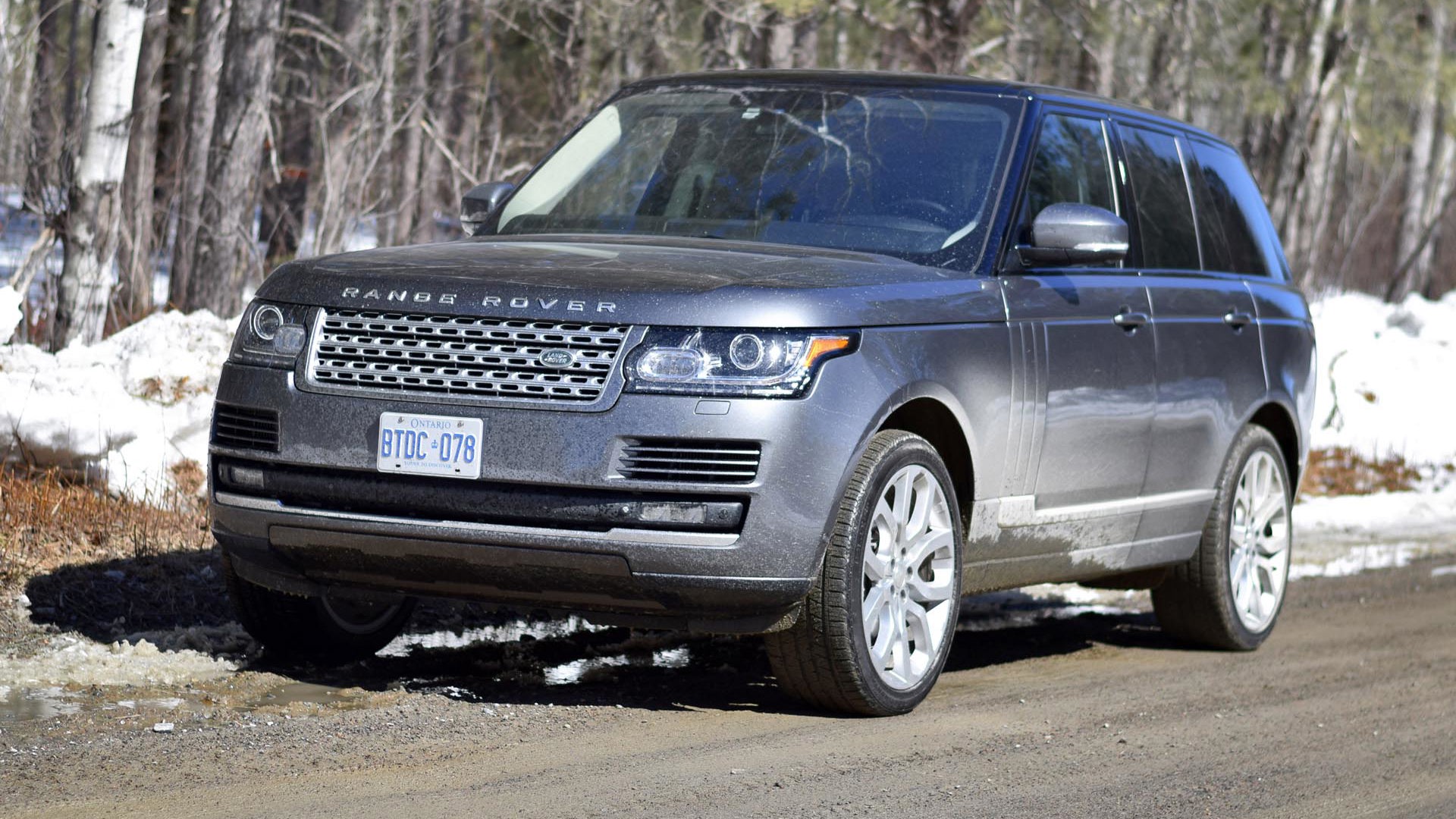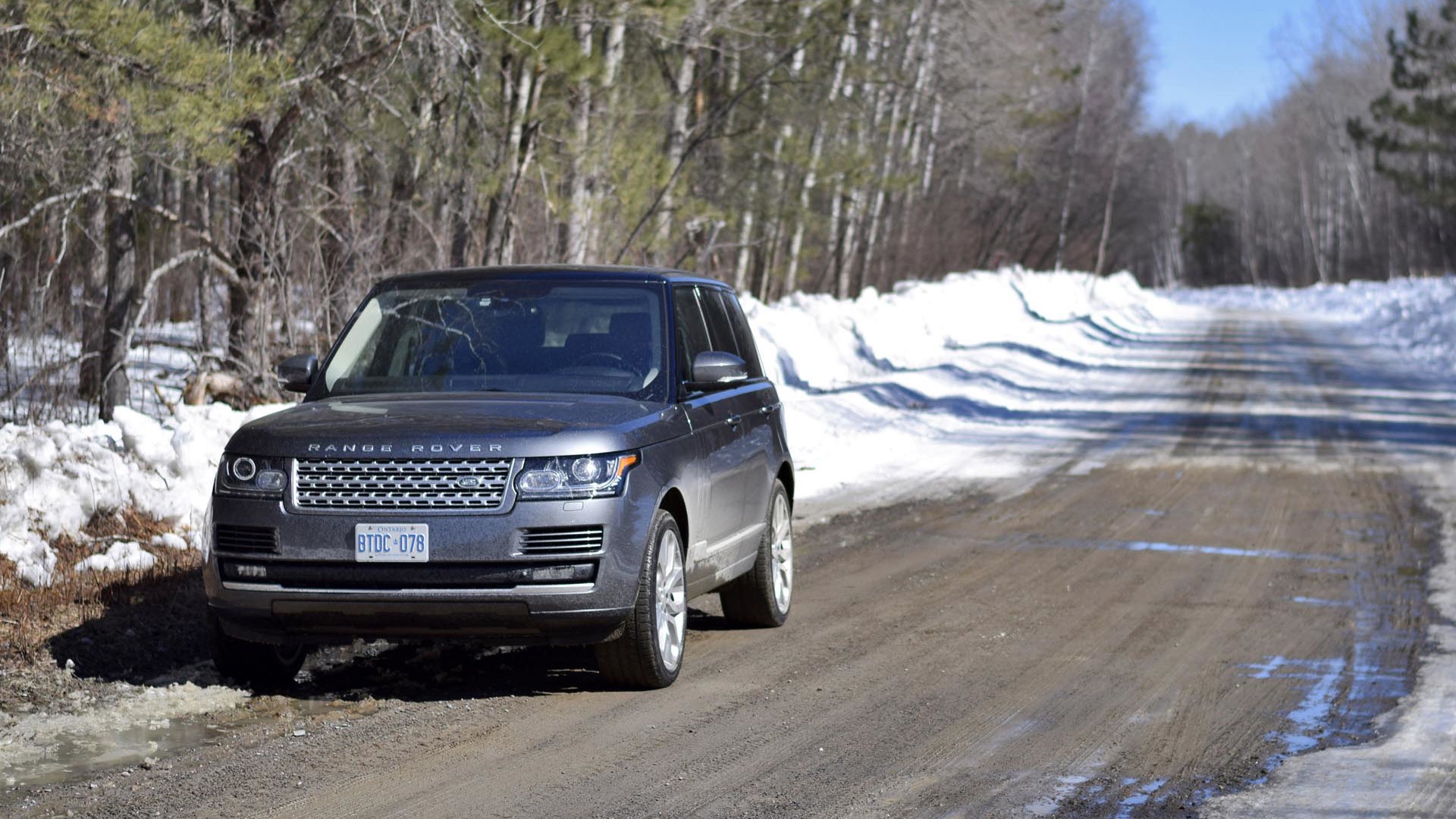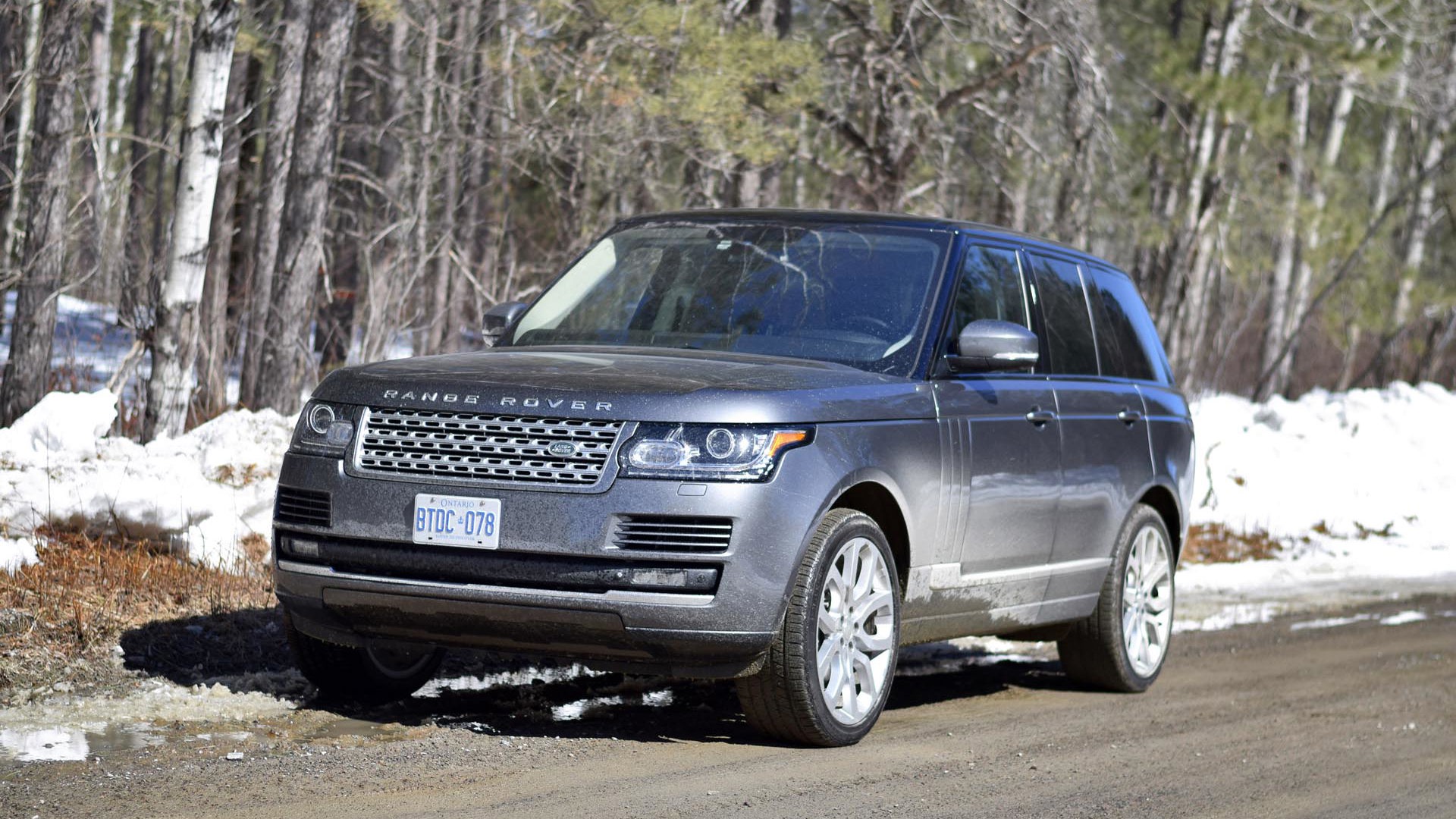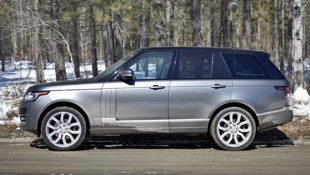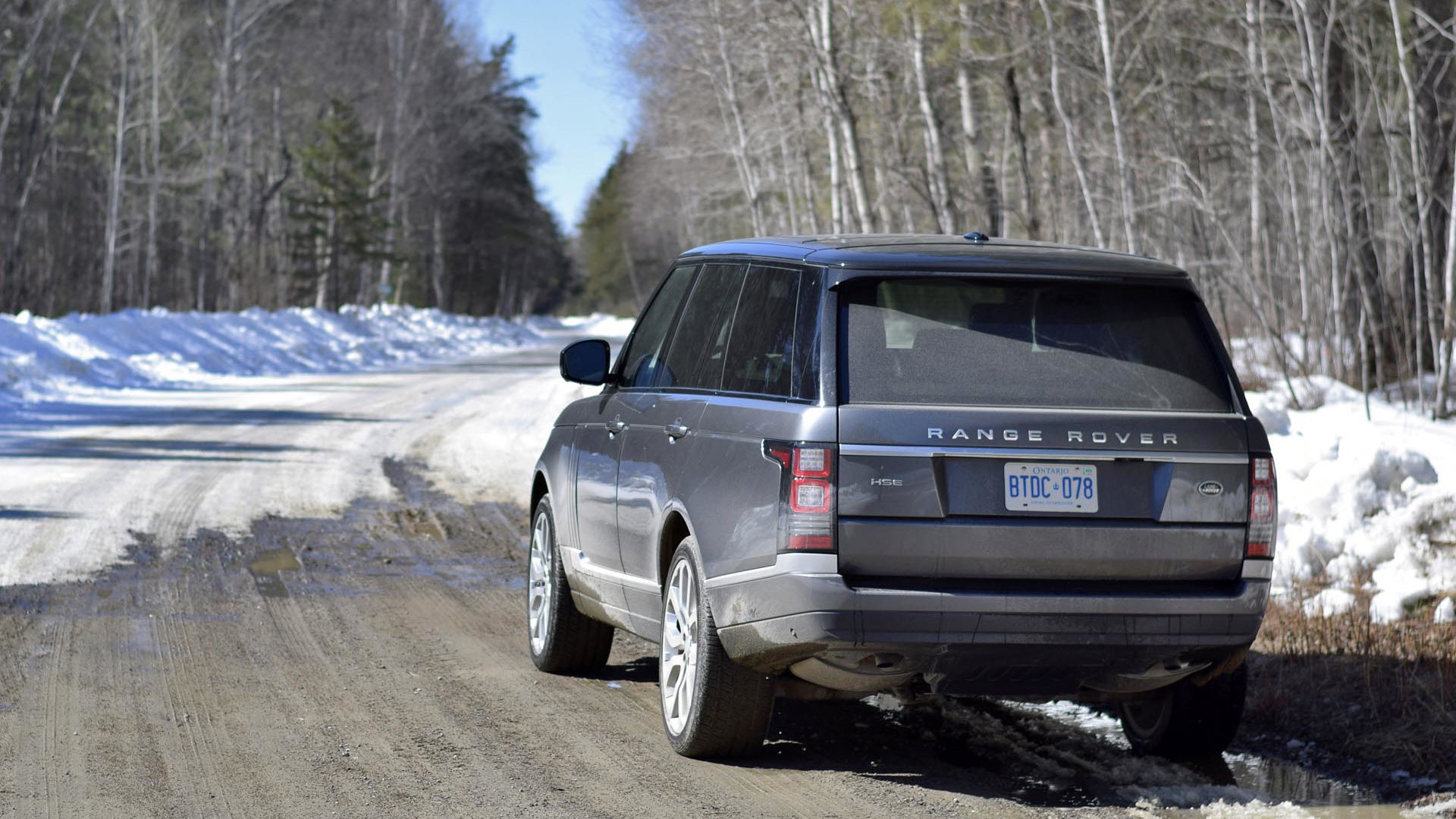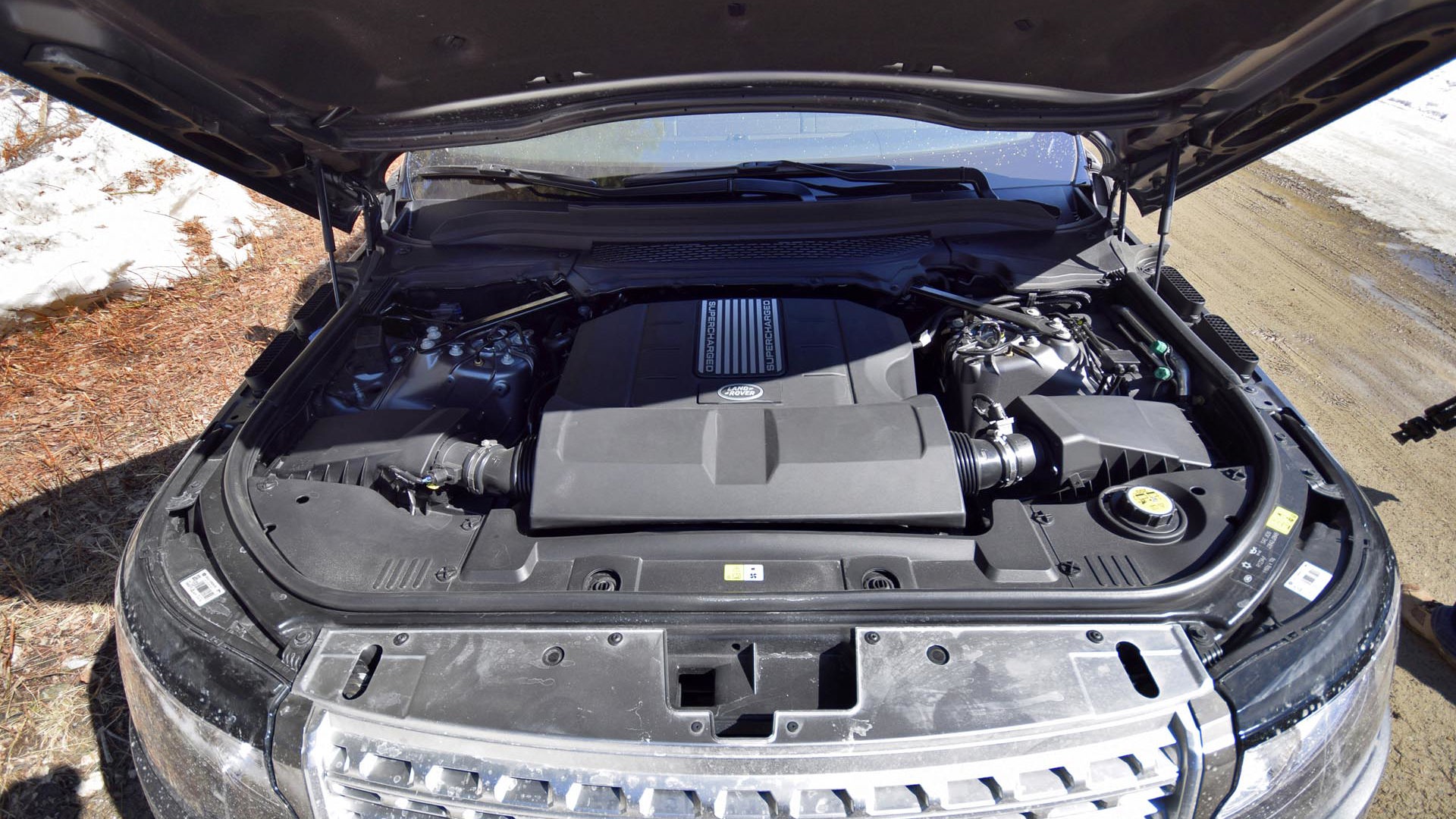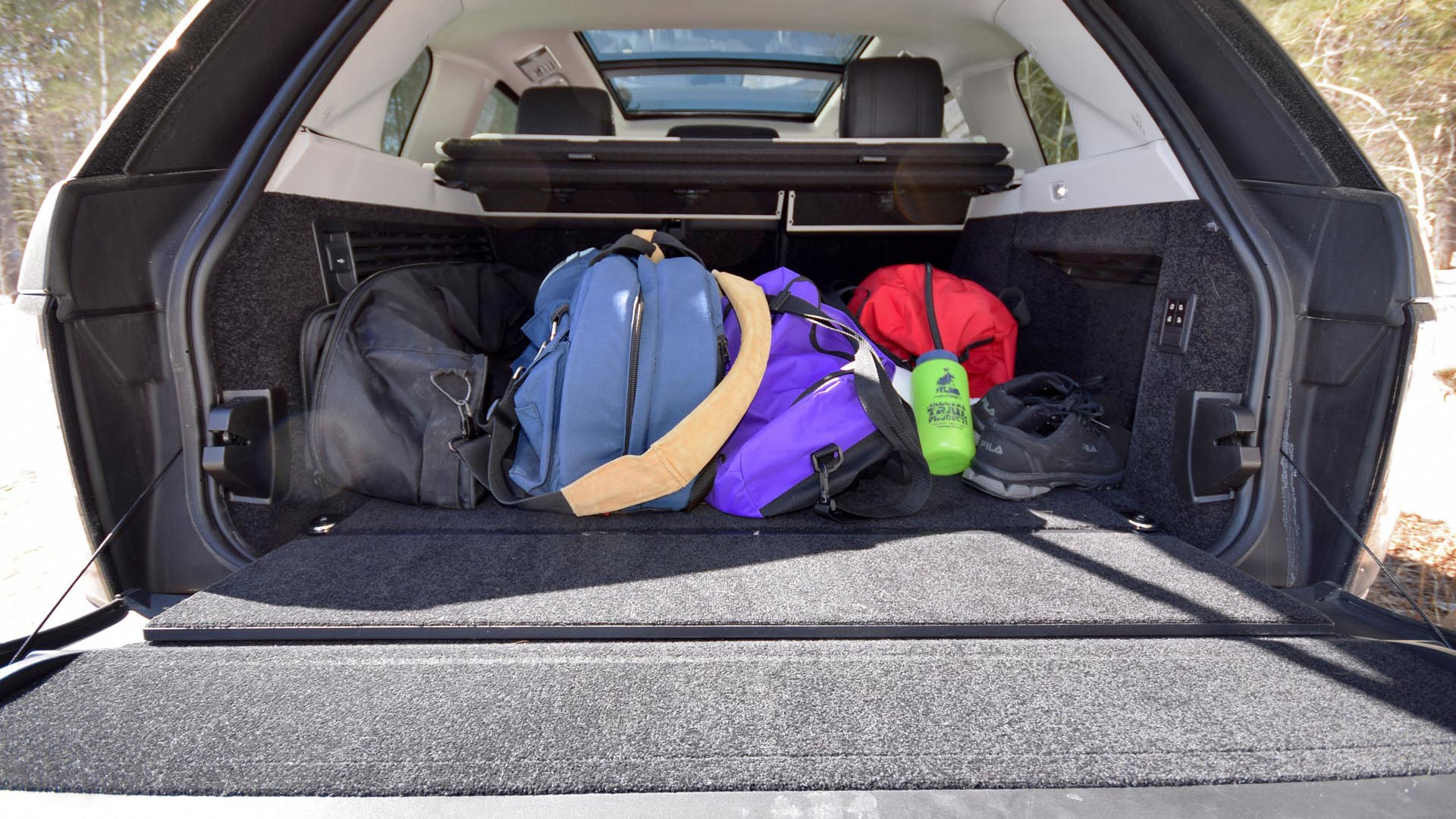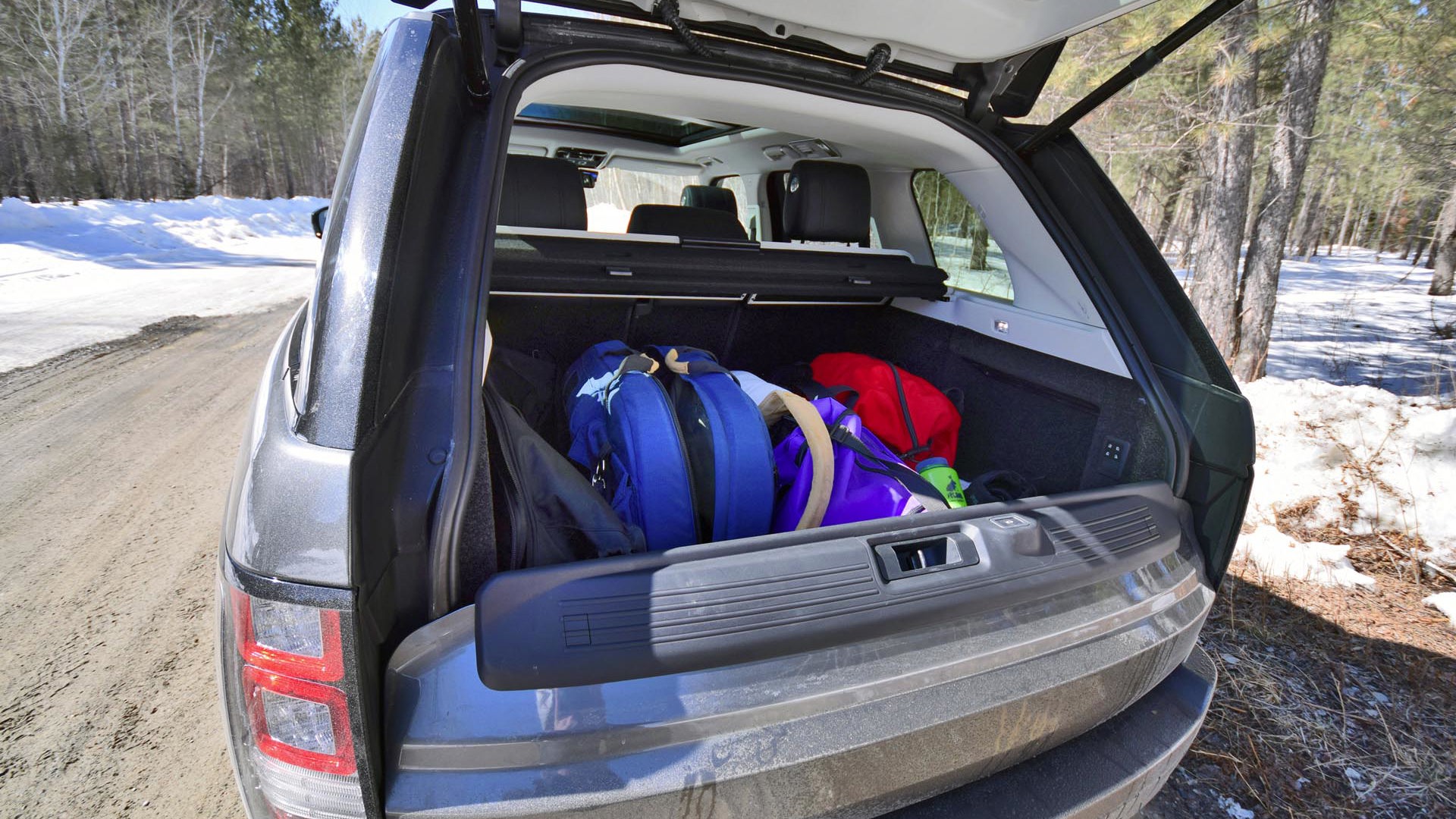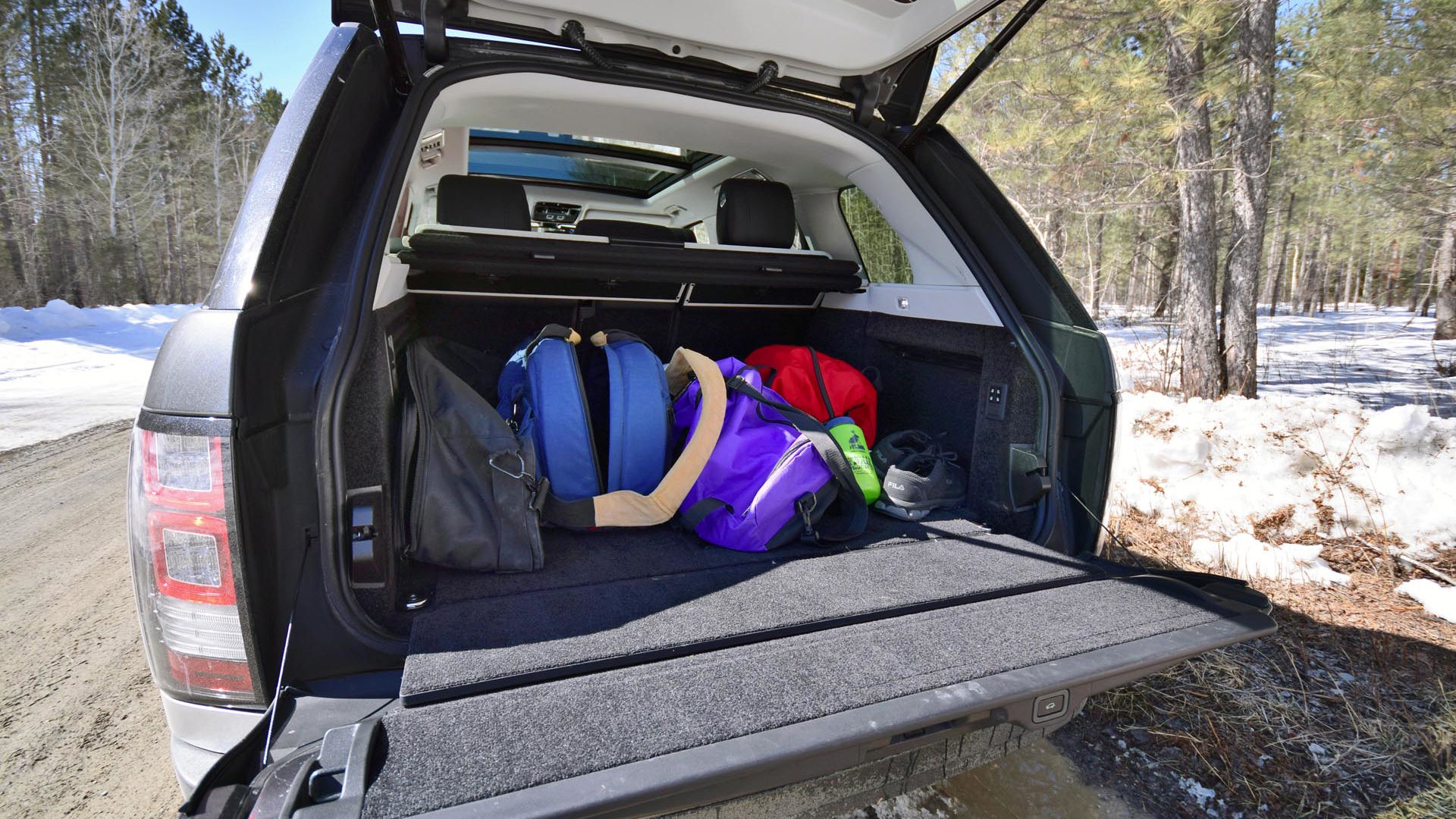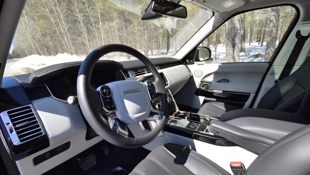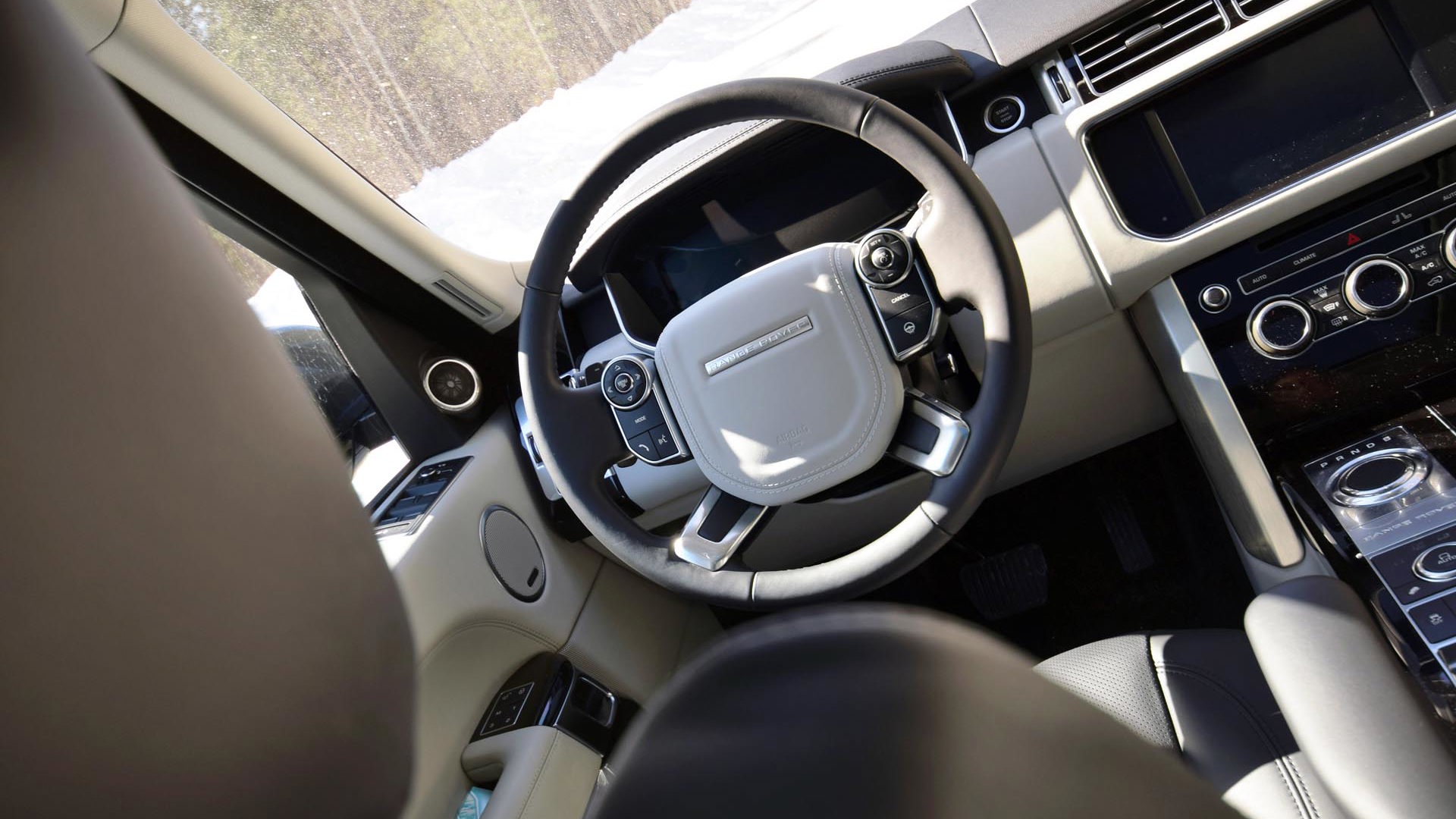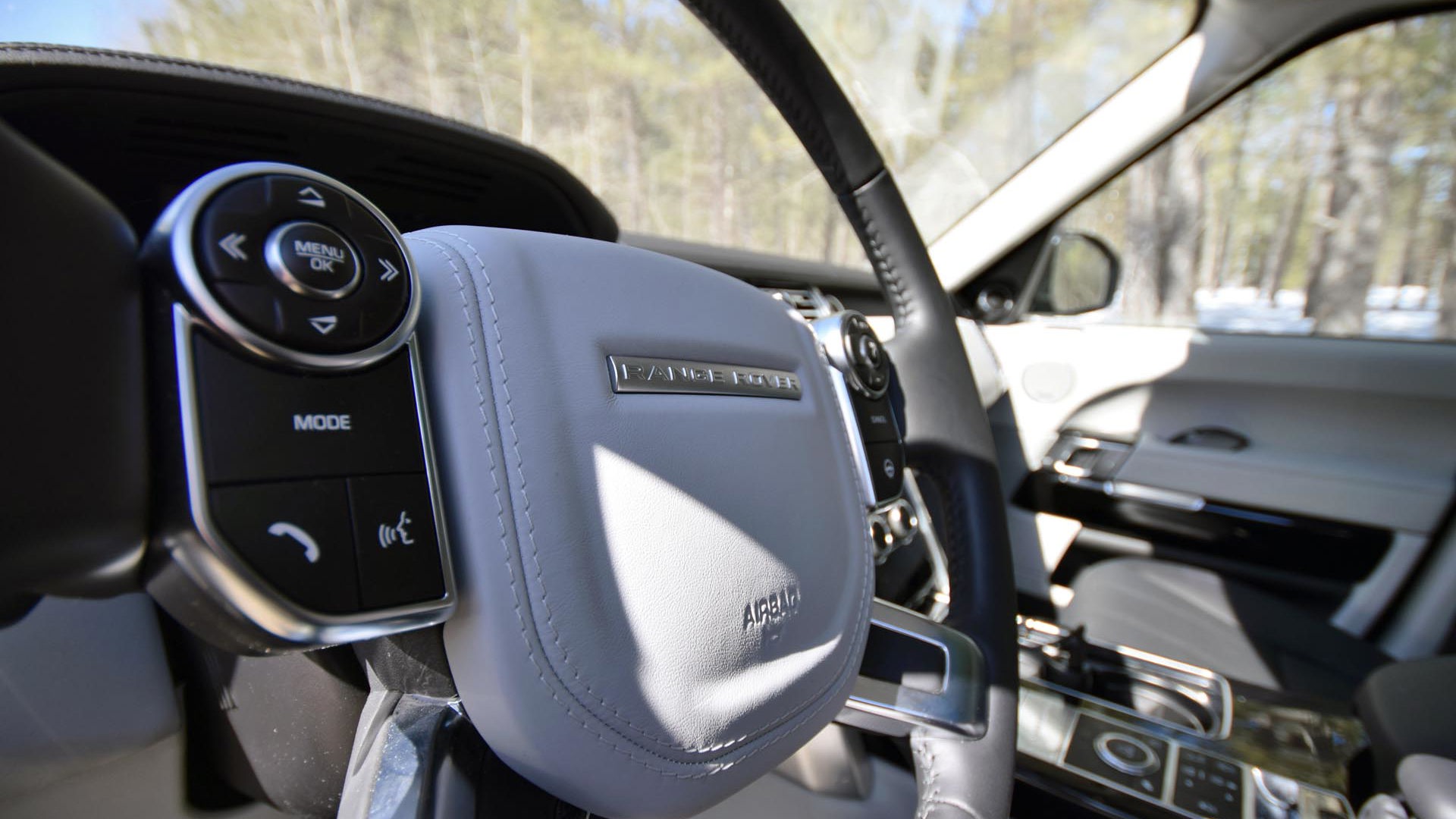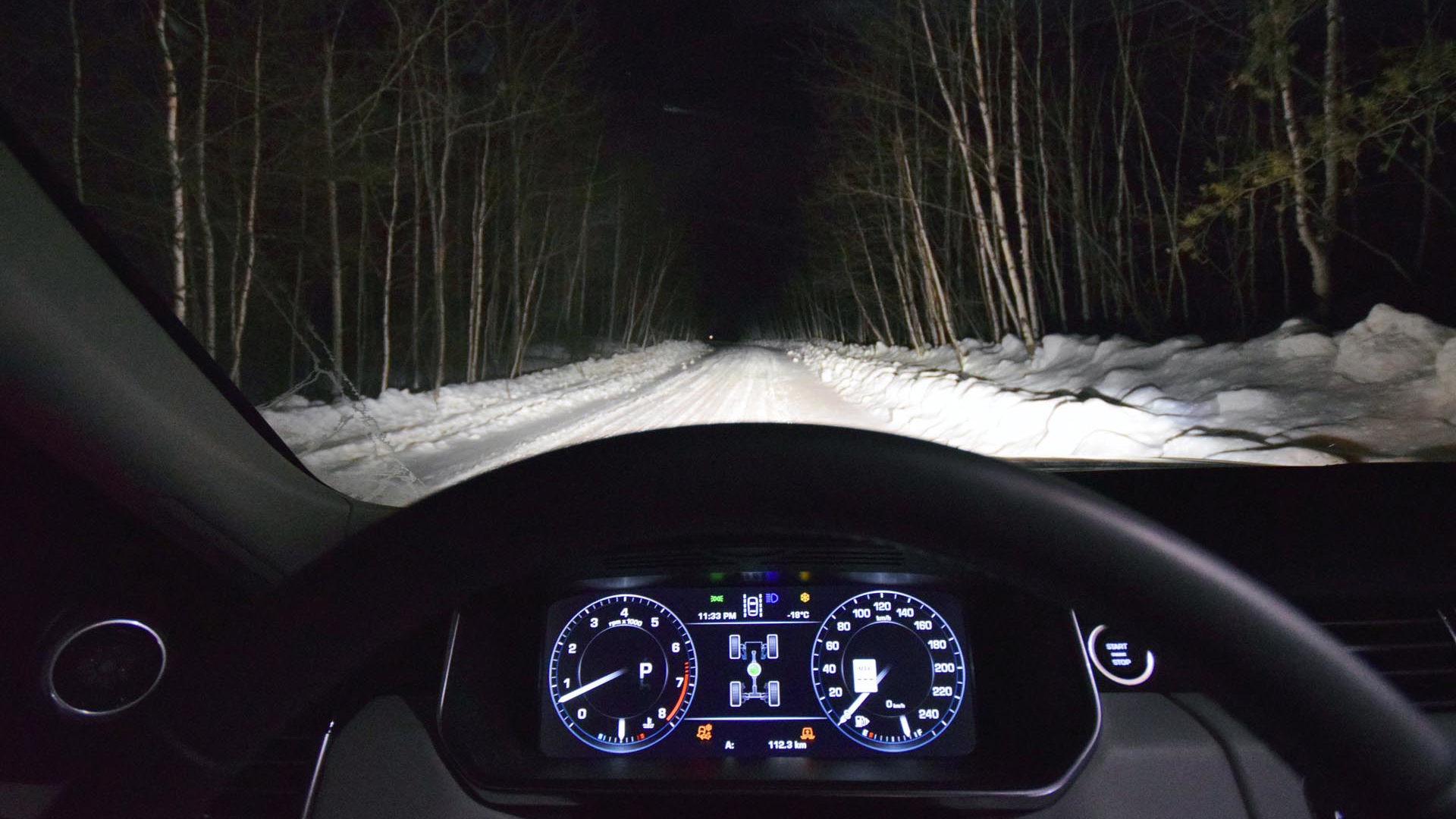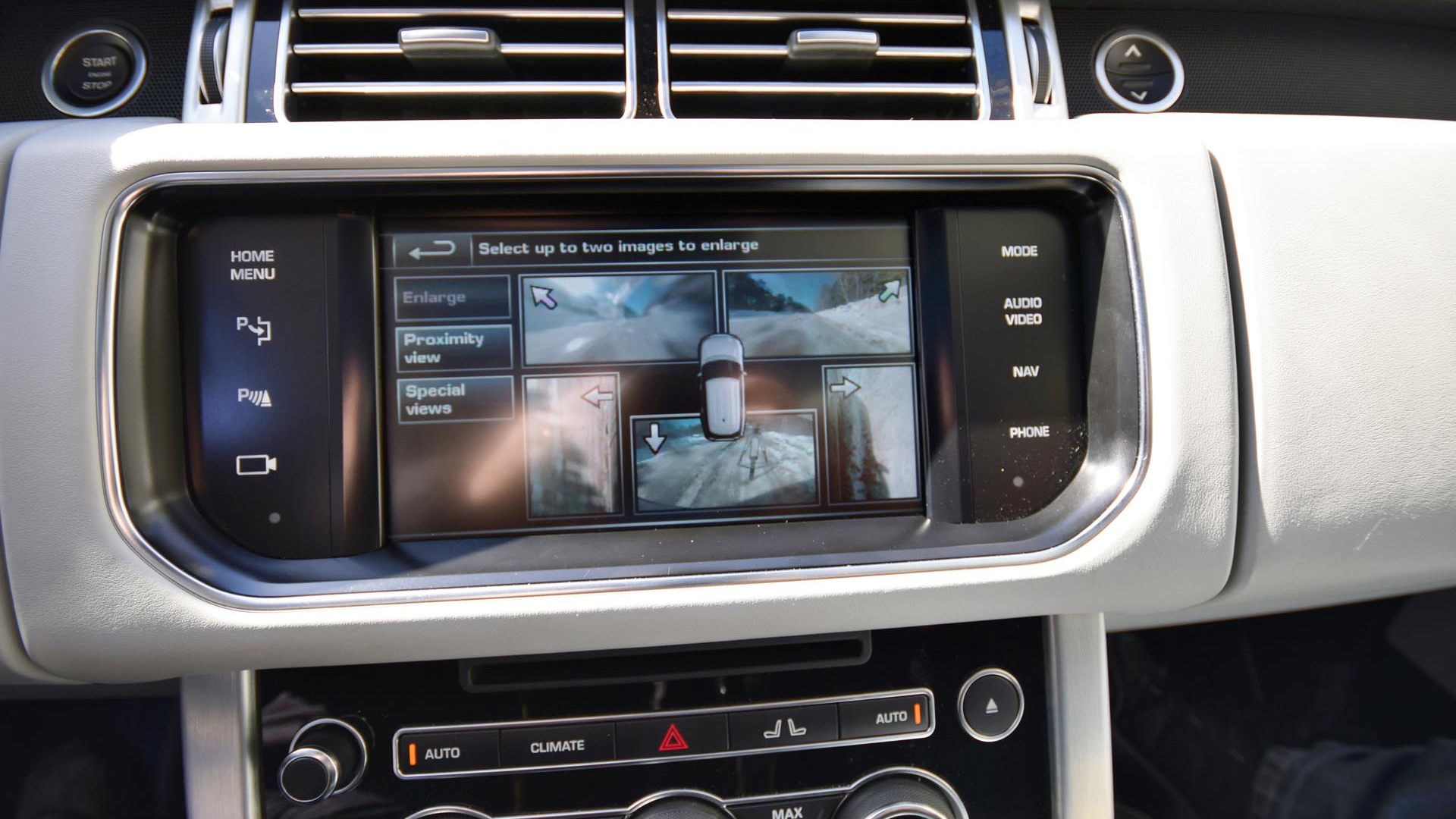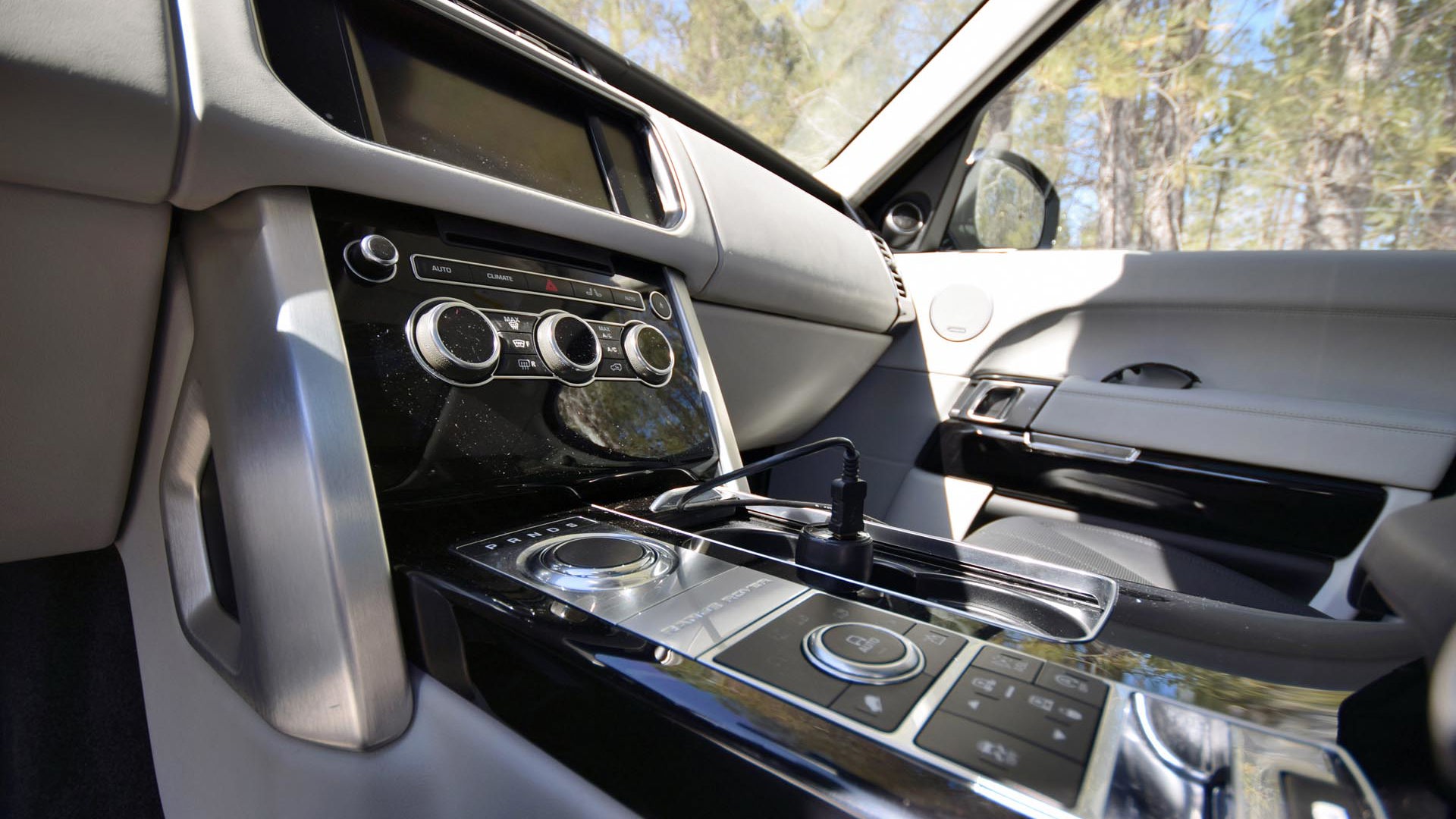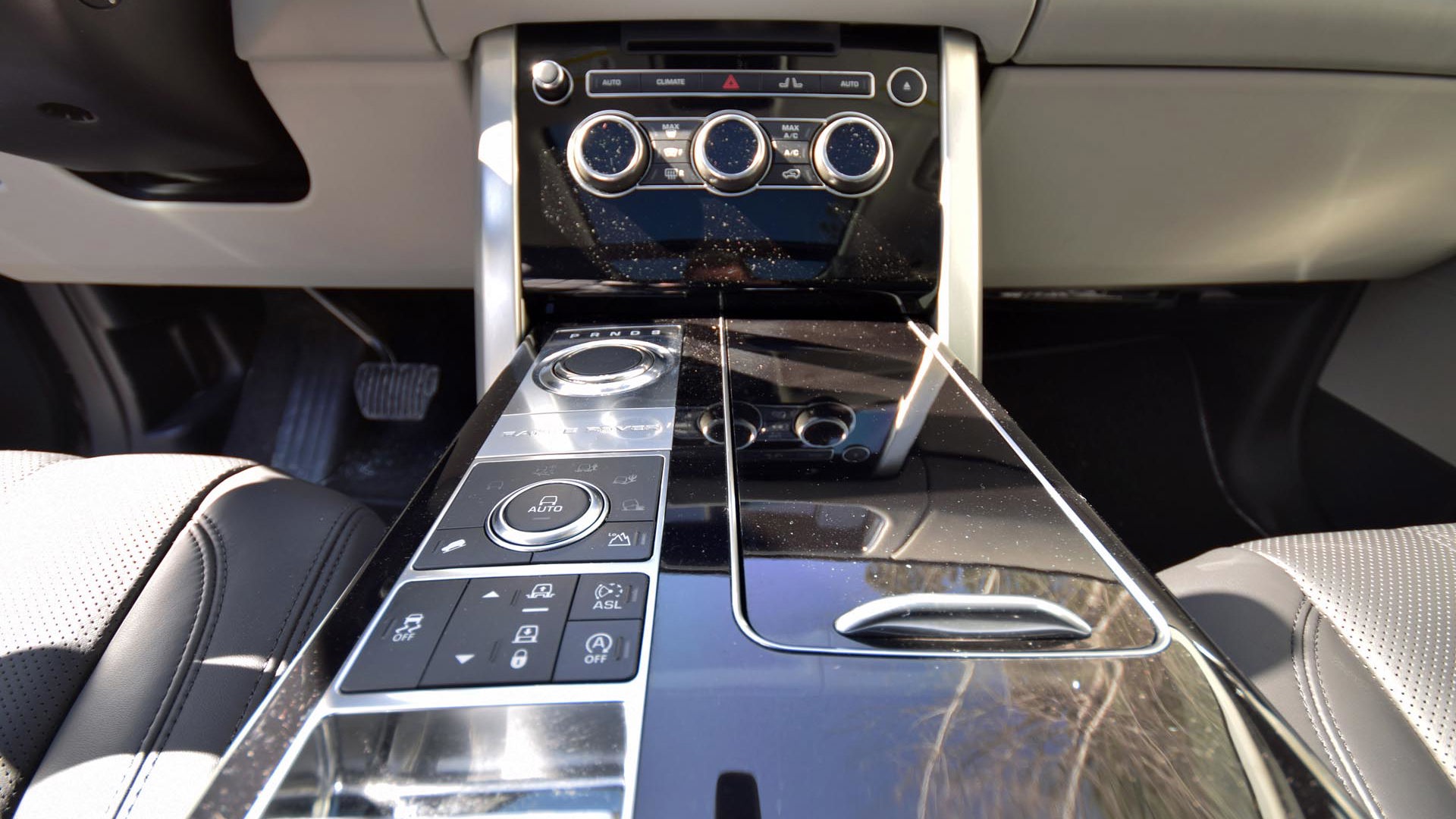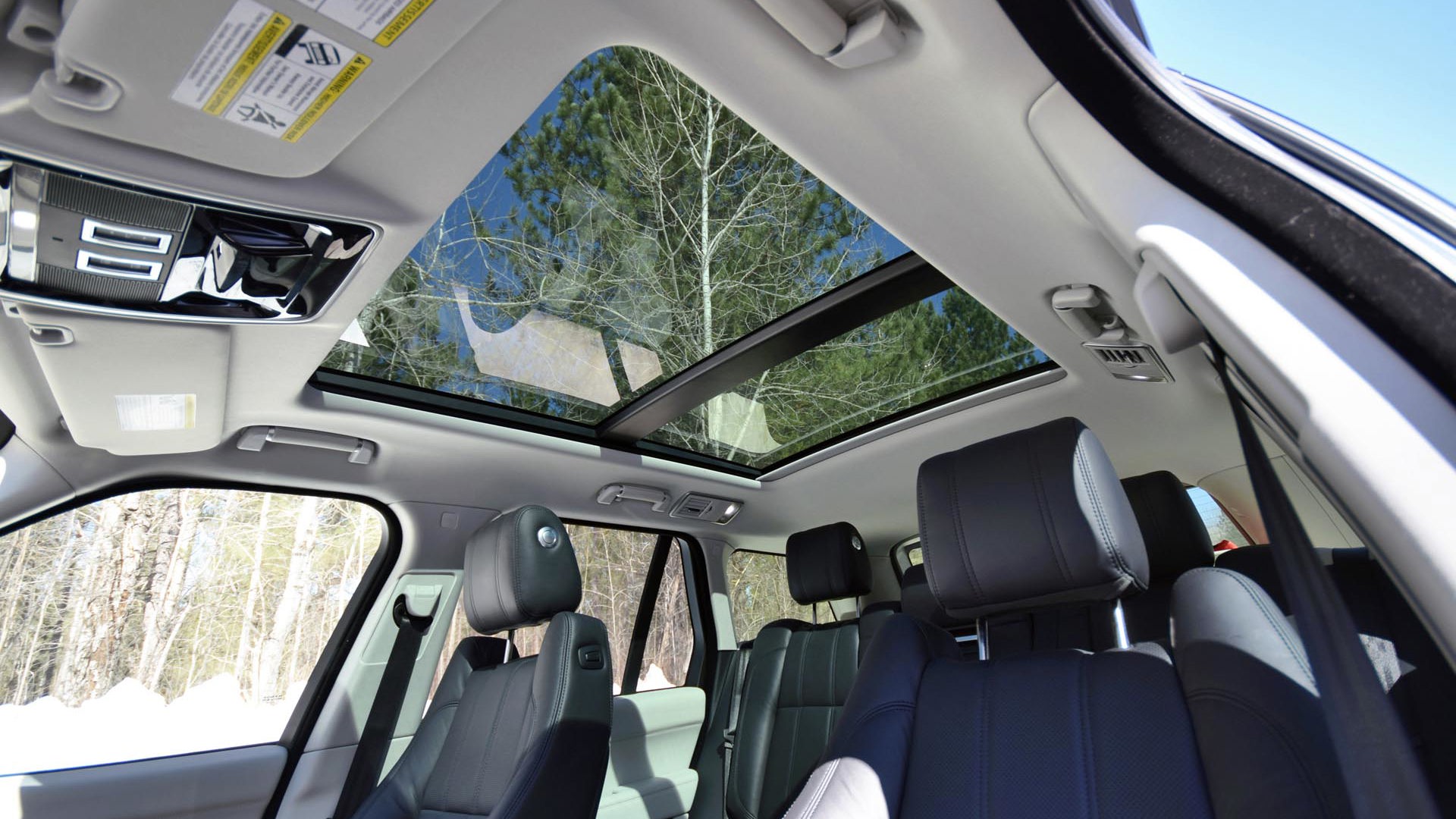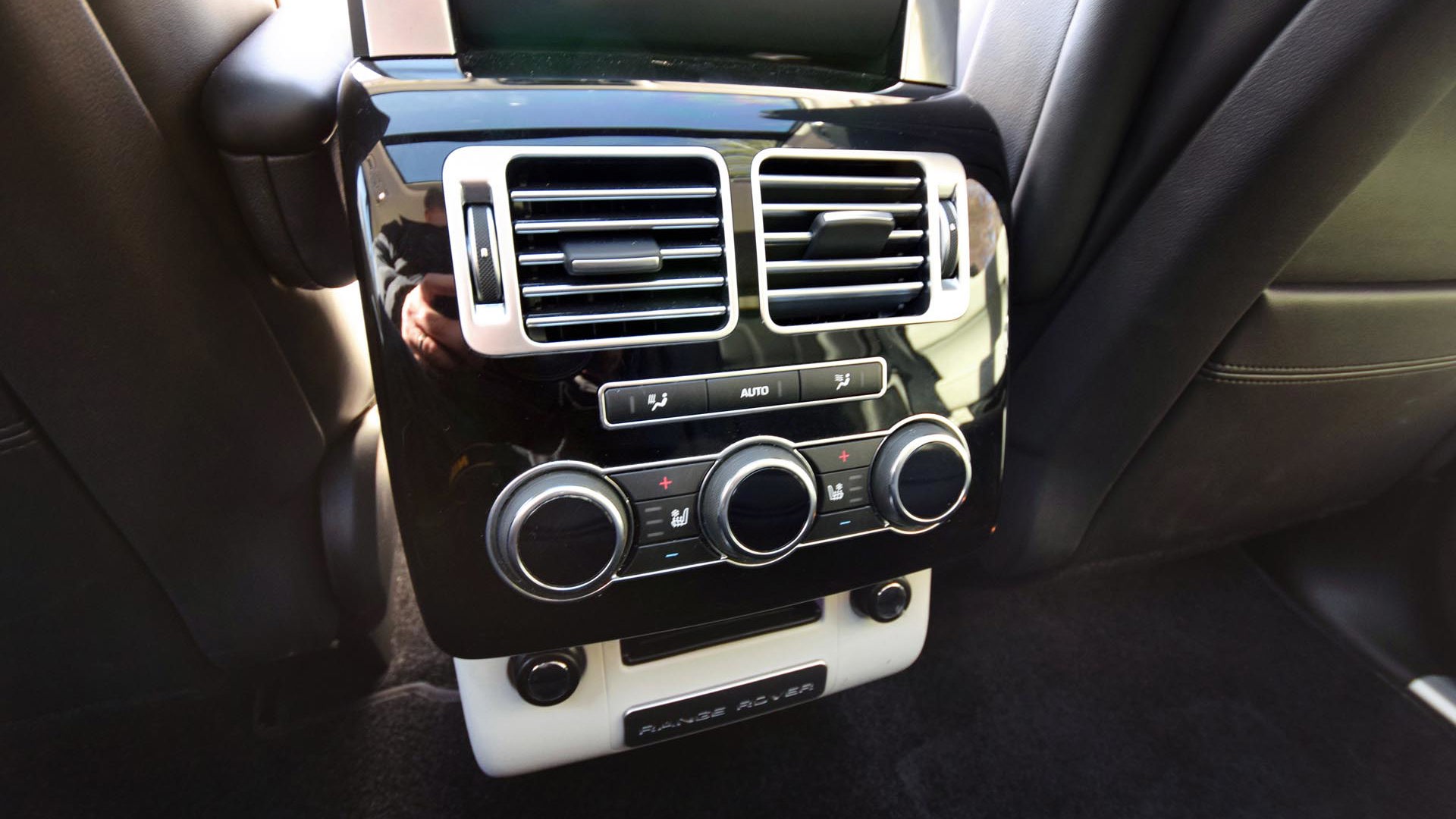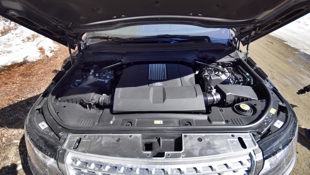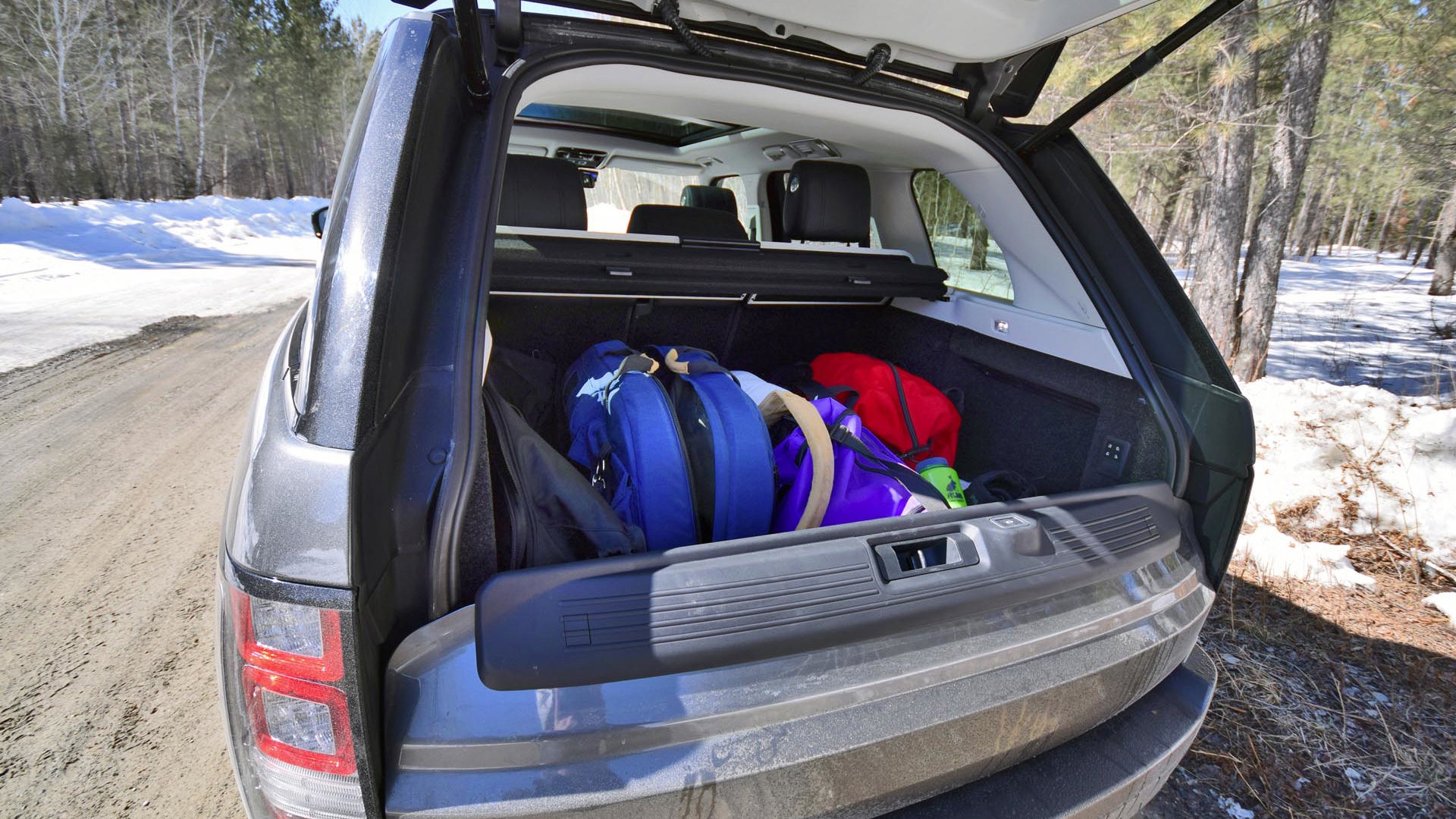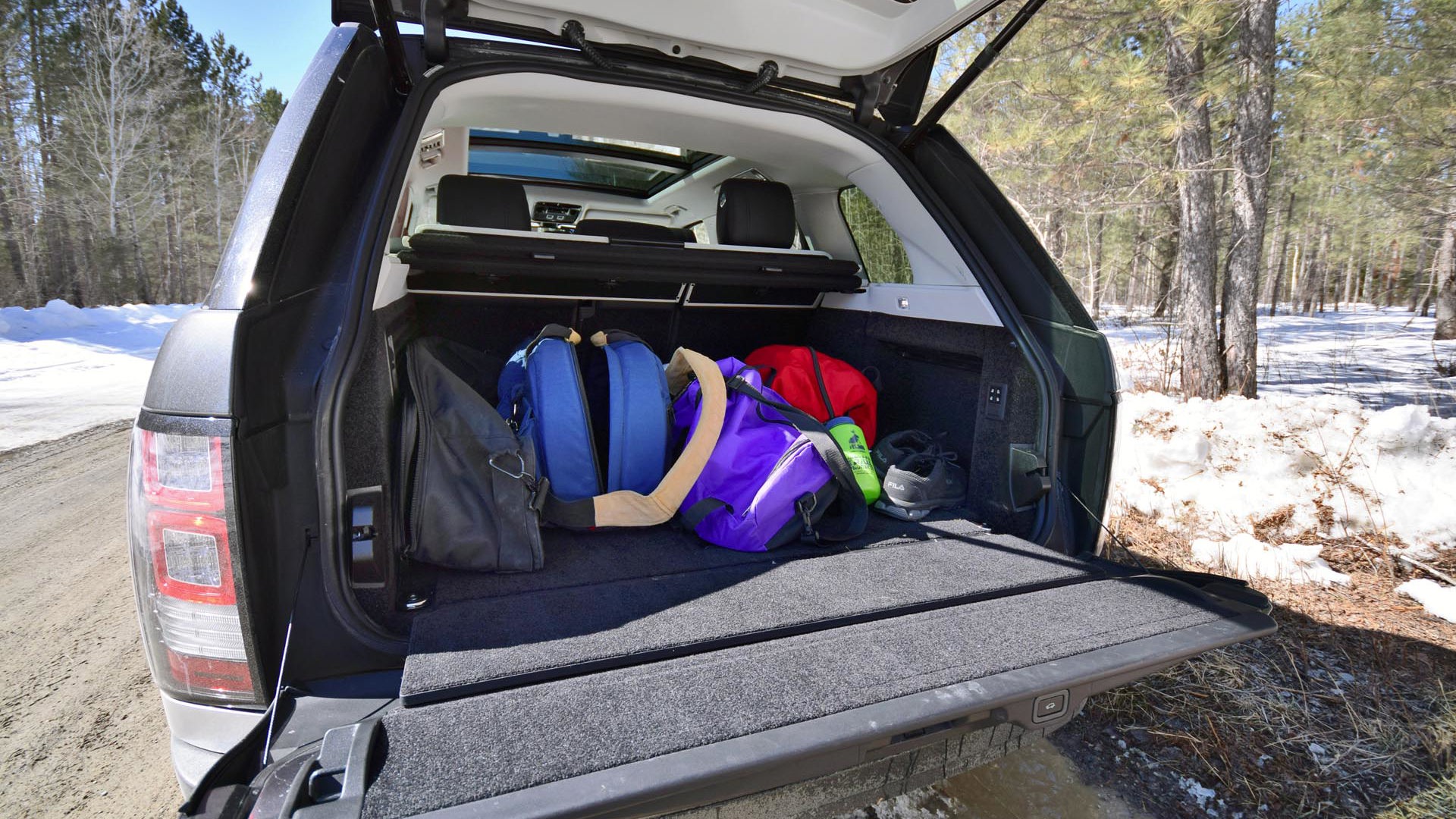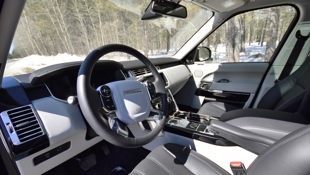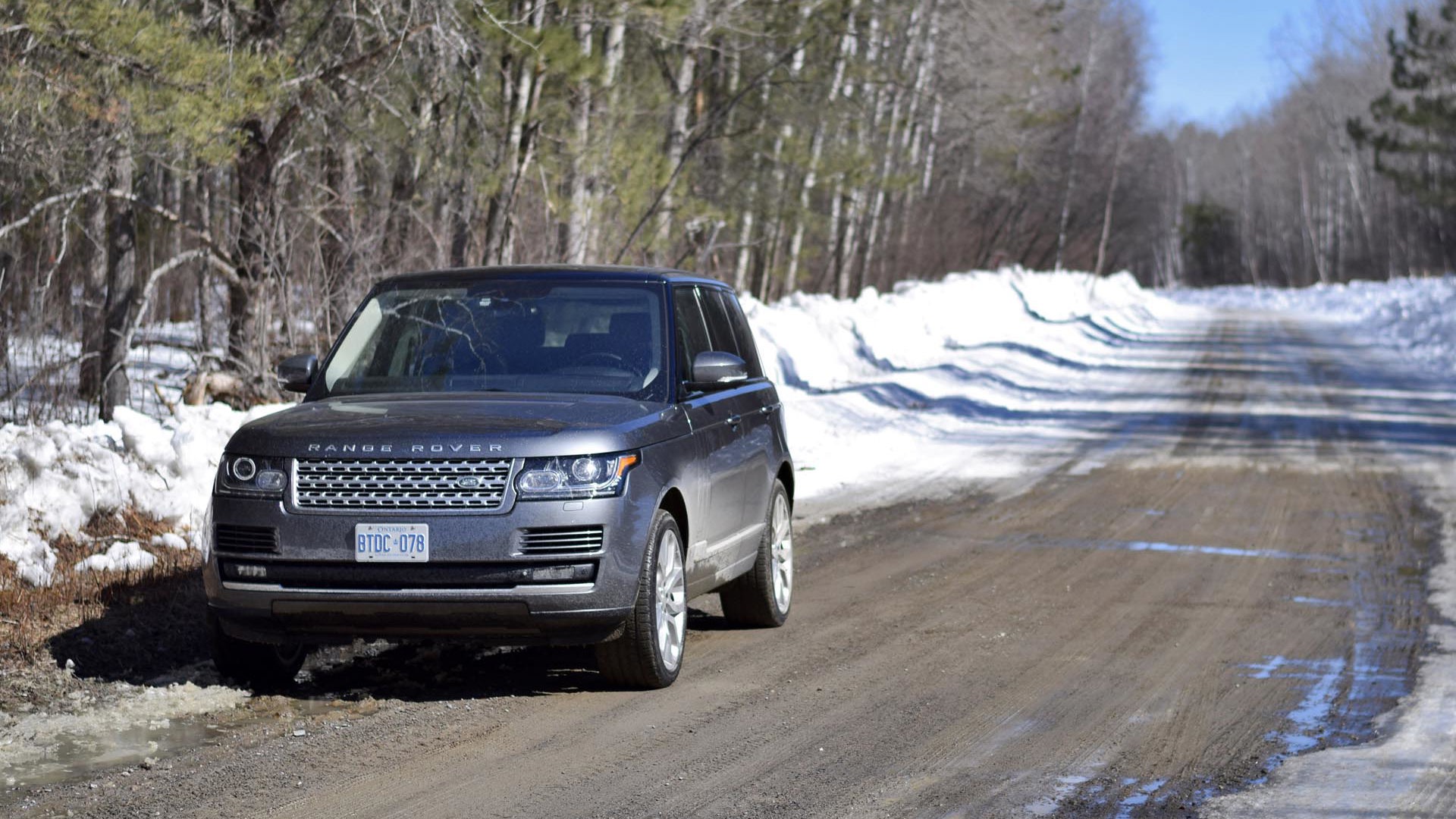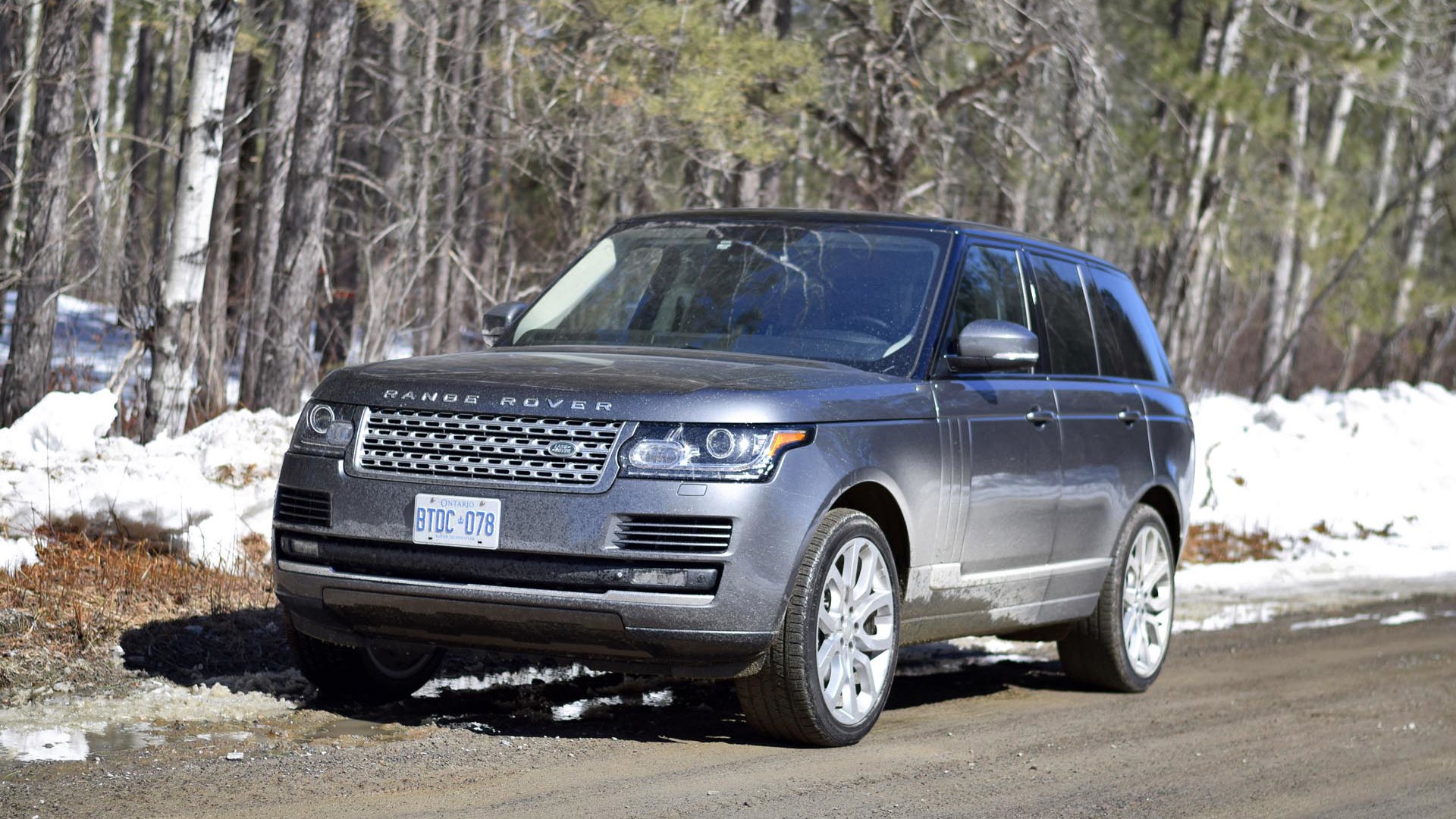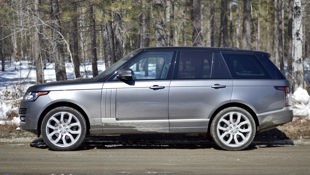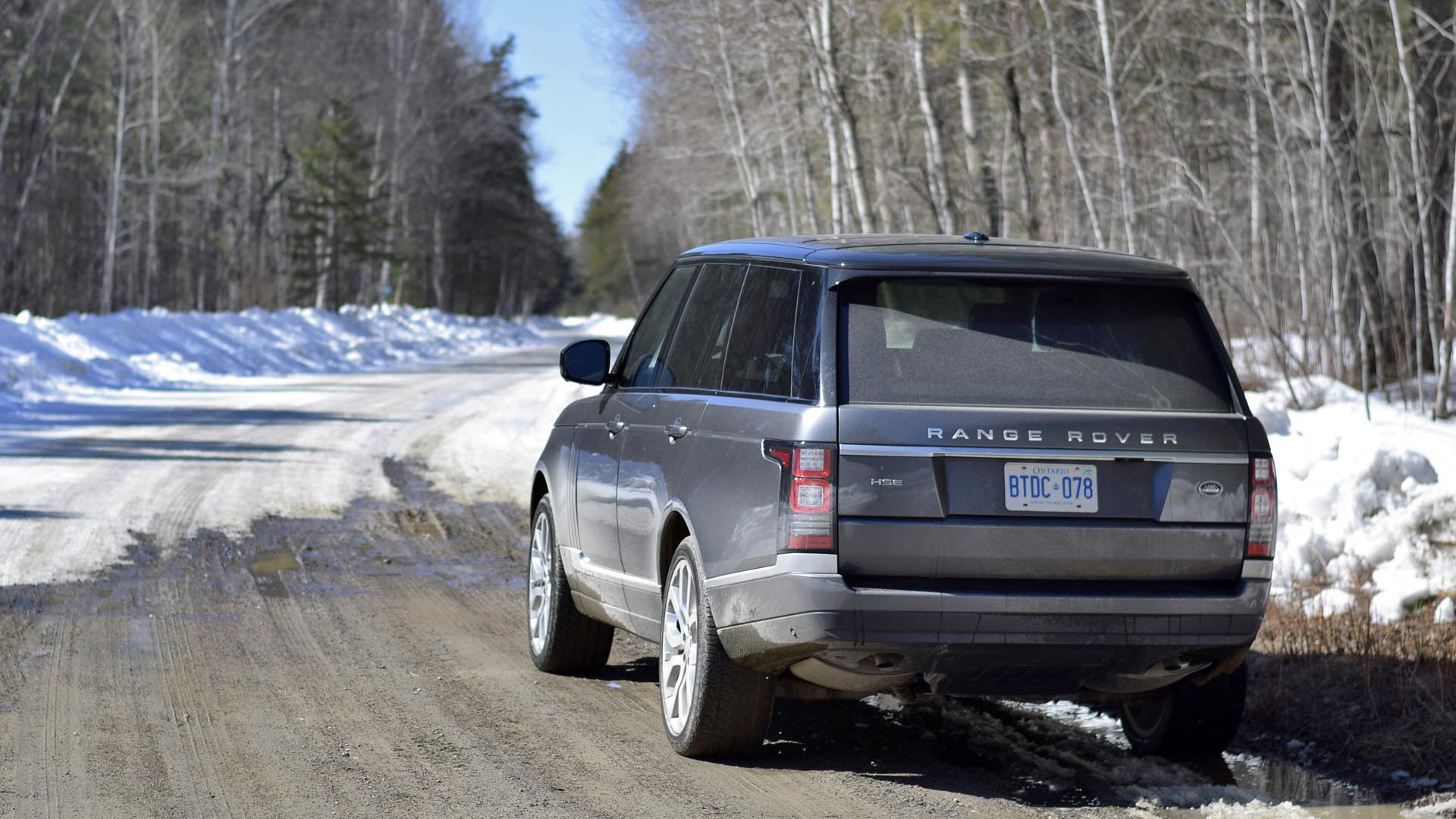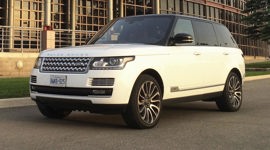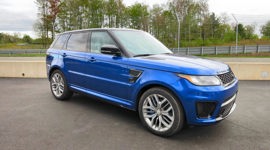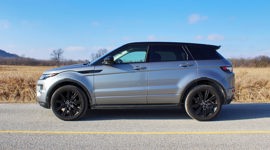 AutoTrader SCORE
AutoTrader SCORE
-
EXTERIOR STYLING8/10
-
INTERIOR8/10
-
PERFORMANCE6/10
-
COMFORT10/10
-
FUEL ECONOMY8/10
The Land Rover Range Rover is one of the only premium sport utes left to offer meaningful off-road capabilities, a four-wheel drive system with low-range gearing for crawling and inching and climbing, and ground clearance to get up and over nearly anything that might pass beneath. It’s a Land Rover, remember.
Some call it a mall-crawler, but if you need it to, the Range Rover will go places.
And though the top-dog Land Rover might be dressed to the nines and is unlikely to be seen playing in the mud with 4Runners and Rubicons on Sunday afternoons, it’s far from a poser luxury ute designed primarily for use around town by ladies with purse dogs.
Some call it a mall-crawler, but if you need it to, the Range Rover will go places.
A Terrain Response selector lets drivers preemptively dial the Range Rover’s numerous systems into whichever setting best suits the driving at hand. Drivers can feel corresponding changes in throttle sensitivity, speed limits, transmission shift strategies, ride height, traction control and more, each referenced via slick animations and diagrams that appear in the all-digital instrument cluster. The Hill Descent Control system creeps the Range Rover down steep and slippery hills at slower-than-walking speeds, no pedals required, and a camera system can, among other things, allow drivers to call up a view of their front tires to check for clearance around sharp obstacles without leaning out of a window.
Need more ground clearance? Tap a button, and the body lifts a few inches higher on the wheels. Need to get your elderly grandmother on board? Tap another, and the suspension hunkers down to access height.
In its standard setting, the tester offered generous ride height, evidenced by the climb up and on board, followed by a tall and commanding driving position enhanced by a tall windshield, thin and low-mounted dash, thin A-pillars, and great outward view from high over the hood. If it’s your thing, you’ll feel that sense of towering SUV confidence here, before you even start the engine.
And the tall stance and taller driving position come with little of the so-called tippiness some SUV hopefuls dread. Two factors at play here: first, the latest Range Rover extensively employs aluminum to reduce weight, which improves handling and effectively lowers the centre of gravity. Second, the air suspension adapts in real time to steering inputs, road surfaces and your Range Rover’s current velocity, making subtle adjustments to keep the body flat on the wheels and enhance stability. Usually, driving spiritedly through some winding backroads in a machine like this is about as much fun as eating a large family of fire ants, but the engineering and tech at work make the big, tall Range Rover handle like it is smaller and lighter than it is. It’s almost sporty.
That air suspension also enables a simply creamy highway and around-town ride, with body motions over the wheels feeling less springy and more floaty. Even uneven roads see body movements that are subtle and smooth, with the airbag dampers providing an extra layer of softness between the road and the occupants. The tester’s 22-inch wheels and low-profile rubber didn’t back this up, and the thin tires saw ride quality deteriorate with some jagged and abrupt sensations on nasty trail surfaces with washboards, potholes and the like. If you’ll be driving on surfaces like these in your Range Rover, consider skipping the huge wheels.
Traction for getting moving over a variety of early-spring, flooded-out backroads conditions proved plentiful. With all chassis and traction systems left in their default modes, drivers get a just-right amount of wheel spin to fling slippery slush or mud from the tire treads, enhancing grip, and only powering the wheels that will help get things moving on anything from snow to slush to ice to yucky, muddy slop.
Doing the moving in the case of this tester was the Range Rover’s entry engine: a staple 3.0L supercharged V6 with 340 horsepower. Most of these wake up only after a very healthy stomp on the throttle, as the programming puts the emphasis on lazy throttle response to enhance fuel economy and smoothness. At times, your writer found the throttle frustrating, even requiring an inch or more of pedal action before the Range Rover began to move.
The smoothed-out throttle contributed to a not-so-bad 13.2 L/100 km overall test mileage average, running premium grade gas and measuring by hand. I’ve put that much fuel through any number of smaller and less-powerful sports utes. If you trust the driver computer readout more than your writer’s math using litres burned and miles driven, it offered an even thriftier figure of 12 L/100 km overall.
When drivers do smash the throttle enough to get a downshift, performance should prove adequate, even generous, for most. The engine makes itself heard but sounds lovely, there’s plenty of jam for passing and merging, and discreet whine from the blower never gets tiring as the revs get into the upper half of the digital tachometer.
Light-footed drivers concerned primarily with fuel efficiency and a powerplant that fully supports laid-back driving will find the supercharged six should do the trick very nicely. Should you require more power, an available supercharged V8 pushes output past 500 horses.
In any case, it’s enjoyed from a cabin that’s absolutely lavish: rich with color, layered with contrasting materials and textures, packed with tasteful touches of high-tech, and finished expertly to the finest detail. It smells like a leather clothing store, and is lined with the sorts of materials you’ll find in the parlour of a ritzy hotel… that is, if hotels still have parlours. Here’s a cabin that fully pulls its weight towards the Range Rover’s price tag.
Plentiful space is on offer, whether it’s in the rear seating row, the front seats, or the giant cargo cavern in back, accessed by a clamshell setup with fold-down tailgate and lift-up liftgate, both motorized. There’s a heap of room back here, and a cargo cover, and a power outlet, and buttons to fold the rear seats up or down, depending on the currently required blend of passengers and gear. The tall cargo load floor and fold-down tailgate makes loading most items easy without risk to the finish on the rear bumper, though pet owners should note that the height exceeds the safe limit for many canines to enter and exit the cargo area via jumping.
Other covetables abound. Front seat occupants can summon heat, cool air, or even a massage from their seats, and sophisticated sensors can even handle all steering inputs while parking, hands-free. The Meridian stereo system is beautifully vibrant, and includes a mighty subwoofer that’ll blow the teeth clean out of your face. You’ll run out of eardrum long before this stereo runs out of horsepower. There’s also a giant panoramic sunroof, self-sealing luxury doors, and a console-mounted cold-box for keeping your luxury sandwiches refrigerated.
The headlights are notable, too. Shoppers mightn’t get to see how these work on a test drive if the sun’s out, but when it’s not, they may not even realize it. The xenon projectors positively flood the road ahead, and the treeline beside, with illumination as bright as a nearby lighting strike. A washer system keeps the lenses clear at all times, and they’re among the best headlights your writer has ever used for safety and reducing late-night eye fatigue.
Vehicles priced in this sort of ballpark typically pose little to complain about, and gripes after a week at the wheel are mostly of the nit-picky variety. The storage cubbies and controls down low on the doors and seats are knuckle smashers, since there’s minimal room between them. And aside from that very lazy throttle pedal, I wished for a slightly heavier feel to the steering at highway speeds to help the Range Rover stay more eagerly locked into its position between the lines.
Ultimately, the Range Rover’s high-class cabin, presence, creamy-smooth highway ride and tremendous use of technology to create confidence and engaging handling all help support the lofty price-tag in a big way.
That price?
As they say, if you have to ask, you might not want to know. The HSE-grade tester, with some toys, came in around $118,000. That won’t stop Land Rover from moving plenty of copies into the driveways of shoppers after a truly world-class sport utility experience.
| Warranty: 4 years/80,000 km; 4 years/80,000 km powertrain; 6 years/unlimited distance corrosion perforation; 4 years/80,000 km 24-hour roadside assistance Competitors: |
| Model Tested | 2015 Land Rover Range Rover HSE |
|---|---|
| Base Price | $104,590 |
| A/C Tax | $100 |
| Destination Fee | $1,575 |
| Price as Tested | $120,065 |
|
Optional Equipment
22-inch wheels ($3,500), Convenience Package ($2,100), Driver Tech Package ($1,200), Climate Comfort Package ($4,150), Premium Package ($1,000)
|
|
